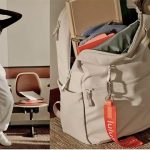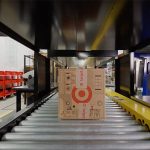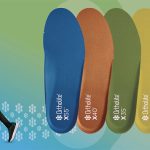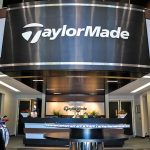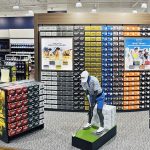Iconic outdoor industry brands Osprey and Hydro Flask have a sick parent. The parent, Helen of Troy, Ltd., did not anticipate the extent of the illness 90 days ago when reporting its fiscal 2024 year-end financials and was surprised by the results and prognosis when assessing its fiscal 2025 first quarter results and the impact of the ongoing symptoms that could inhibit its ability to recover before year-end.
Wall Street was less than tolerant of the surprise on Tuesday morning, July 9, which included a miss on first-quarter expectations and a cut in Helen of Troy’s full-year guidance.
HELE shares closed down 27.7 percent to $64.33 on July 9.
“The results we reported this morning are disappointing and not reflective of the measurable progress we’ve made on key initiatives or of the opportunities I believe we have ahead of us,” offered Helen of Troy CEO Noel Geoffroy on a conference call with analysts. “Net sales and adjusted diluted EPS came in below our expectations, with current trends setting up a challenging backdrop for the remainder of the fiscal year. As a result, we see fiscal 2025 as a time to reset and revitalize our business. We continue to believe that our strategies are the right ones to deliver sustainable and profitable growth.”
Geoffroy also said on the call that the first quarter “revealed realities about the business and our company” that have been a call to action for her personally, as well as the global leadership team and the entire organization.
“While we have made important progress against Project Pegasus and our strategic initiatives, macro factors have worsened since we last spoke, and we have more data and insight on the health of our brands and the business,” Geoffroy continued. “These factors have put heightened focus on the work we must do in some key areas. I will walk you through the insights we’ve gained, the actions we are taking in response and evidence of the progress we are making, all of which give me confidence that we are making the right choices for the long-term health of our brands and sustained shareholder value creation.”
Geoffroy said that as a house of brands, Helen of Troy is proud of the diversity of its portfolio and the strong consumer following that its brands have across the home, outdoor, beauty and wellness categories. “Our imperative is to revitalize our brands with stronger marketing, innovation and execution,” she committed. “We are investing in the capabilities we need to successfully deliver our strategy over the planned period and well beyond. We are committed to investing in next-level data, analytics and capabilities to improve our effectiveness and productivity across the enterprise.”
Geoffroy turned to a discussion of what had changed or exacerbated in the first quarter.
“As has been widely reported, the macro environment and the health of consumers and retailers has worsened,” the CEO noted. “Consumers are even more financially stretched and are even further prioritizing essentials over discretionary items.
“Specific to our business, we have seen some areas become more challenged over the last three months. For example, an unexpected slowdown in the global outdoor category impacted sales of our packs and accessories. There was also more pressure in the specialty beauty channel and mass beauty overall, especially in beauty tools under $100. Also, more discretionary household items like dry food storage continue to trend down. We’ve heard broadly from mass retail that traffic overall is slower throughout the country, and promotional pressure is increasing.”
Geoffroy noted that, in reaction to these dynamics, retailers are managing inventories more closely to account for the slowdown, and some have implemented new systems for just-in-time inventory management.
“All of this exposes us to more volatility and less visibility into order volumes and timing,” Geoffroy said. “We are also recognizing the impact that the COVID pandemic had on our business. The industry has had to deal with massive changes in consumption patterns and consumer behavior. There were supply chain issues, overstocking, inventory clearouts, and an explosion in e-commerce. All of this has led to general uncertainty around what a post-COVID environment looks like for many consumer categories, including many of ours, from wellness to kitchen tools to home organization. Also, since 2020, categories such as insulated beverage, prestige beauty tools and liquids, air purification, and travel have become increasingly competitive.”
Helen of Troy’s Outdoor Business
Looking specifically at the company’s Home & Outdoor segment, which includes Osprey, Hydro Flask and OXO, the kitchen utensil brand, there appeared to be puts-and-takes for the outdoor brands under the umbrella.
Home & Outdoor net sales revenue decreased 8.6 percent to $198.5 million in the fiscal first quarter ended May 31, compared to $217.1 million in the prior-year comparative quarter. The decrease was reported to be driven by lower replenishment orders from retail customers, softer consumer demand, shifts in consumer spending, a global outdoor slowdown in packs and accessories, increased competition in the insulated beverageware category, and the impact of the shipping disruption at Helen of Troy’s Tennessee distribution facility (Tennessee DC) due to automation startup issues affecting some of the segment’s small retail customer and direct-to-consumer orders. These factors were partially offset by new and expanded distribution, incremental sales from the company’s launch of the travel tumbler and increased international sales.
“Some implementation hiccups are always expected,” Geoffroy admitted when discussing the Tennessee DC issues. “But the final phase of startup, which utilizes the highest level of technology and automation, has created some unexpected challenges affecting our fulfillment of small retail customer and direct-to-consumer orders for OXO and Hydro Flask. It’s important to note that the automation startup issues are only impacting a limited subset of OXO and Hydro Flask orders that rely on the highest level of automation, but, unfortunately, the impact is enough to have a meaningful effect on our results for the first half of fiscal 2025.”
The company’s Home & Outdoor segment operating income was $15.9 million, or 8.0 percent of segment net sales revenue, for the quarter, compared to $22.1 million, or 10.2 percent of segment net sales revenue, in the year-ago quarter. The decrease in segment operating margin was said to be primarily due to planned higher marketing expense as the company reinvested back into its brands, additional costs associated with automation startup issues at the Tennessee DC, an increase in depreciation expense, the impact of unfavorable operating leverage due to the decrease in net sales, and a less favorable customer and product mix. These factors were partially offset by favorable inventory obsolescence expenses year-over-year, lower commodity and product costs and the favorable comparative impact of a charge of $3.1 million related to the bankruptcy of Bed, Bath & Beyond incurred in the prior-year period.
Segment-adjusted operating income decreased 38.5 percent to $21.1 million, or 10.6 percent of segment net sales revenue, compared to $34.3 million, or 15.8 percent of segment net sales revenue, in the prior year period.
Geoffroy also called out a few bright spots for its brands in the Home & Outdoor segment. “Despite the earlier mentioned softness in the global packs and accessories categories, Osprey continues to gain share in technical packs, where it remains the leading brand,” she noted. “Consumers choose Osprey over the competition for its technical prowess in carry, fit, durability, and its use of sustainable materials.”
Geoffroy said that while Hydro Flask performed below expectations in the U.S., it grew in all major international markets in the quarter. “This is the direct result of stronger collaboration between our teams as Hydro Flask leverages the experience of the international sales team to open up new opportunities. We expect this expanded distribution internationally, coupled with the previously mentioned distribution gains and new designs in North America, to benefit us in the latter half of this fiscal year.”
Beginning in fiscal 2024, Helen of Troy reportedly refocused on the health of its brands and invested in elevating brand-building fundamentals by developing and implementing a framework across its entire marketing organization. Geoffroy said this entailed a rigorous approach to quantitatively defining and segmenting the market, selecting who it was serving and clarifying what the company’s brands stand for.
“All our marketing content, activation and innovation will be grounded in these revitalized, data-centric brand strategies,” Geoffroy said. It takes time to do this rigorous upfront work and then activate to rebuild brand relevance and the innovation pipeline needed to gain momentum and drive consistent revenue and share growth.”
Geoffroy reported that eight of the company’s key categories have grown market share this fiscal year through May, and five others showed share trend improvement in May in the U.S. measured channels. The CEO also said Hydro Flask embraced the shift in the category with new, on-trend content featuring young people engaged in various activities, which extended beyond its traditional positioning.
“We have launched new designs that appeal to more consumers, such as the popular Sugar Crush line with a waterfall of pastel colors and the two-tone Ombre design that both tap into the fashion sense of our target consumer,” she noted. “We also have the timely Limited Edition USA water bottles for Americans to use as they cheer on our athletes this summer. In addition, we launched a new loyalty rewards program called House of Hydro that allows consumers to earn points that can be used to purchase products on our website.
Geoffroy also pointed out that Hydro Flask has broadened its presence in premium grocery customers and beyond.
Fiscal 2025 Annual Outlook
The company has forecasted that its Home & Outdoor segment net sales will decline 3.0 percent to 1.0 percent for the fiscal year, which includes the expectation of continued shipping disruption in its Tennessee DC through the second quarter of fiscal 2025, compared to the prior expectation of growth of 1.0 percent to 4.0 percent.
For the broader company, Helen of Troy, Ltd. now expects consolidated net sales revenue in the range of $1.885 billion to $1.935 billion for Fiscal 2025, which implies a decline of 6.0 percent to 3.5 percent, compared to the previous range of a decline of 2.0 percent to growth of 1.0 percent.
The company’s sales outlook continues to reflect its view of lingering inflation and further consumer spending softness, especially in specific discretionary categories. The sales outlook now reflects the expected impact of executional challenges in the company’s Tennessee DC, its view of increased macro uncertainty, an increasingly stretched consumer, a more promotional environment, and retailers more closely managing inventory levels.
Regarding the quarterly cadence of sales, Helen of Troy now expects a decline in net sales of approximately 7 percent to 4 percent in the second quarter of fiscal 2025 and a drop of 2.5 percent to growth of 1 percent in the second half of fiscal 2025. The company also sees a decline in adjusted diluted EPS of approximately 45 percent to 35 percent in the second quarter of fiscal 2025 and a drop of roughly 3 percent to growth of 3 percent in the second half of fiscal 2025.
Image courtesy Hydro Flask








